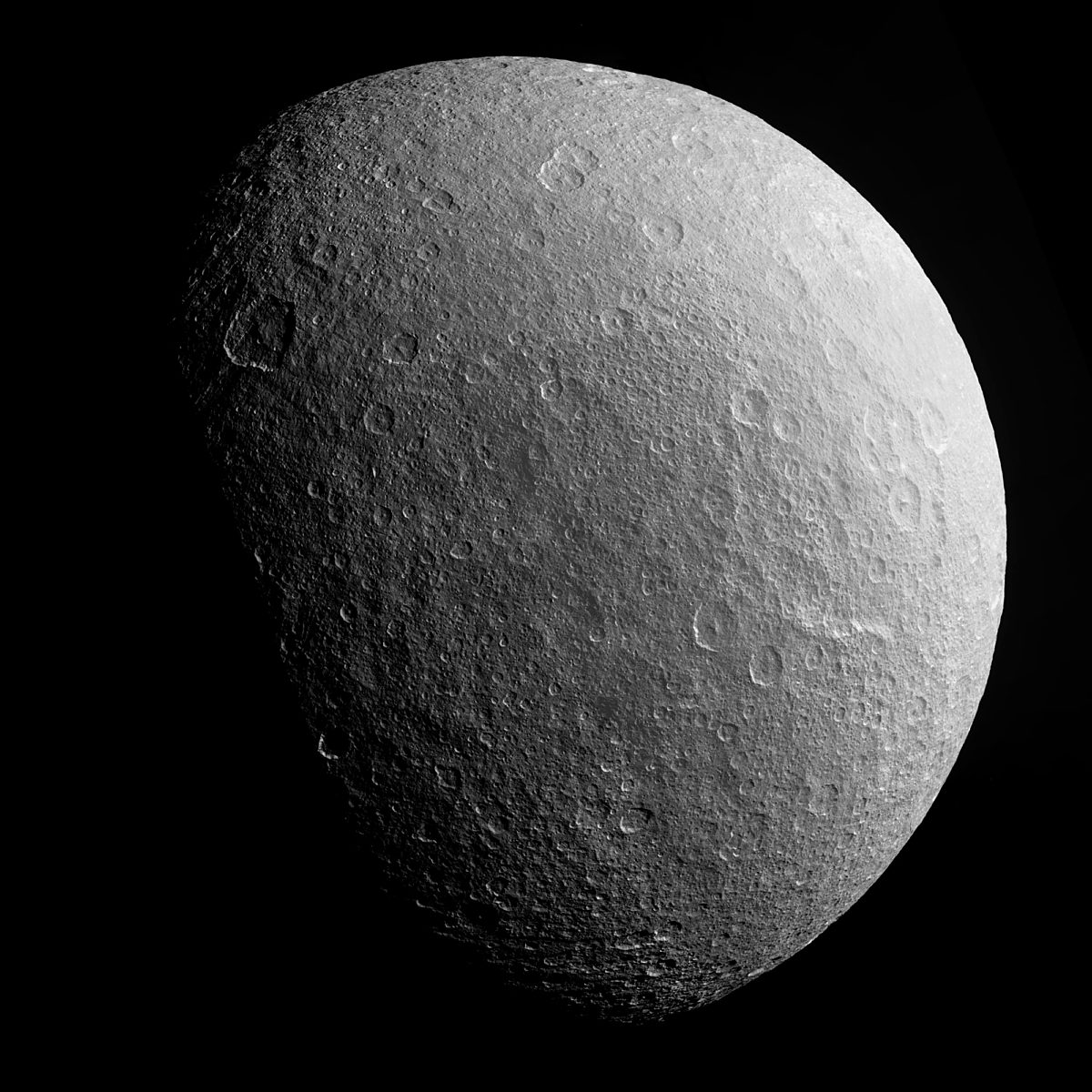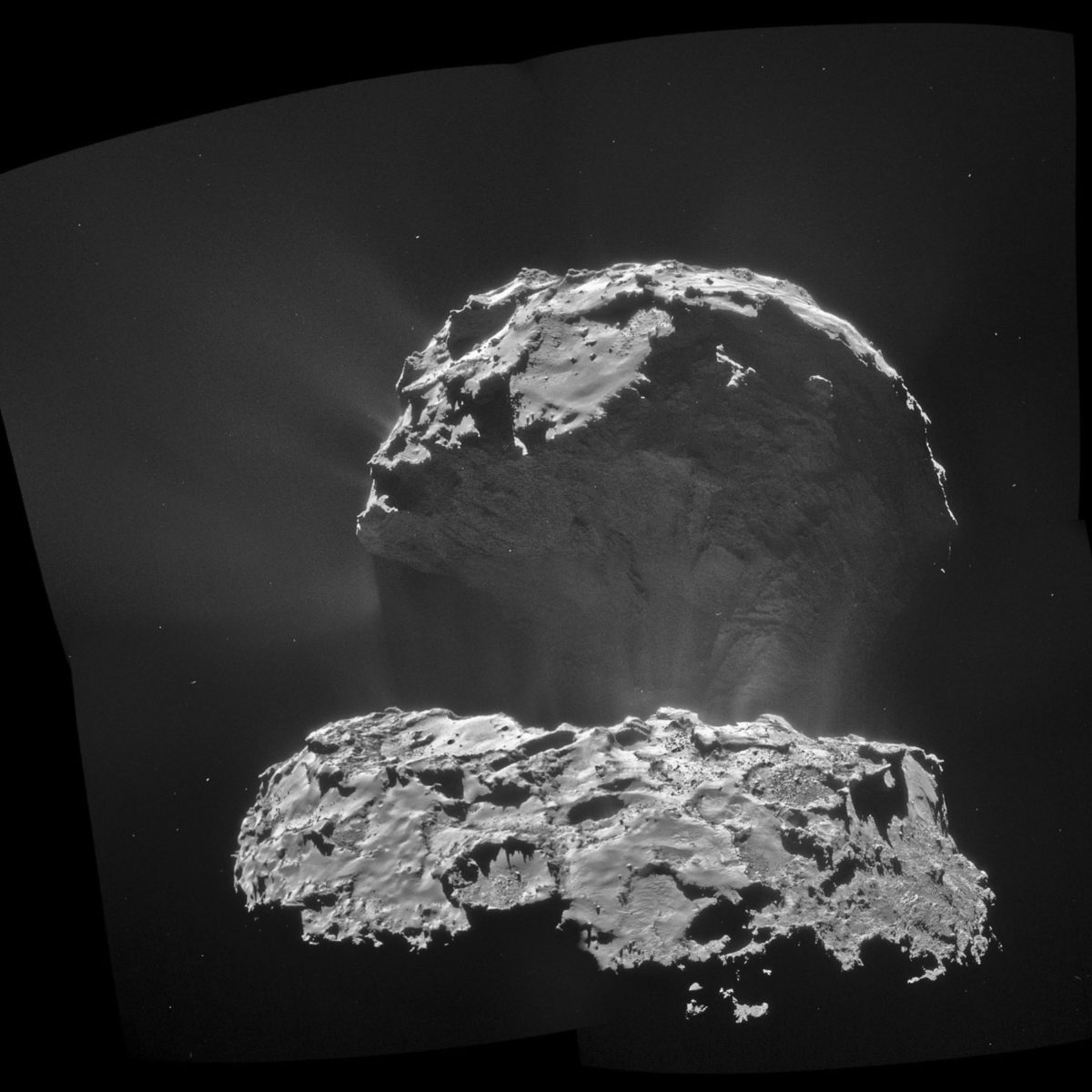All
All
Stories, updates, insights, and original analysis from The Planetary Society.
A moon with atmosphere
What is the solar system moon with the densest atmosphere? Most space fans know that the answer is Titan. A few of you might know that Triton's is the next densest. But what's the third? Fourth? Do any other moons even have atmospheres? In fact, they do; and one such atmosphere has just been discovered.
Pretty Cassini pictures: animation of Iapetus' north pole, and other fun
Now that Cassini has returned to Saturn's equatorial plane, it has lots of opportunities to observe Saturn's moons. For about a week, Cassini has been taking regular sets of images of Iapetus, which I've assembled into an animation.
LPSC 2015: MESSENGER's low-altitude campaign at Mercury
At last week's Lunar and Planetary Science Conference, the MESSENGER team held a press briefing to share results from the recent few months of incredibly low-altitude flight over Mercury's surface. The mission will last only about five weeks more.
Prometheus, Pandora, and the braided F ring in motion
Cassini recently took a long, high-resolution movie of the F ring, catching a view of its ringlets, clumps, and streamers, and two potato-shaped moons, Prometheus and Pandora.
LPSC 2015: First results from Dawn at Ceres: provisional place names and possible plumes
Three talks on Tuesday at the Lunar and Planetary Science Conference concerned the first results from Dawn at Ceres. Chris Russell showed a map of
LPSC 2015: "Bloggers, please do not blog about this talk."
One presenter at the Lunar and Planetary Science Conference asked the audience not to blog about his talk because of the embargo policy of Science and Nature. I show how this results from an incorrect interpretation of those policies. TL;DR: media reports on conference presentations do not violate Science and Nature embargo policies. Let people Tweet!
LPSC 2015: Philae at comet Churyumov-Gerasimenko
In my first post from the 2015 Lunar and Planetary Science Conference, I discuss the latest work on Philae images, and some cometary polymers.
Adding Churyumov-Gerasimenko to my scale comparison of comets and asteroids
Having found a color photo of the comet, I finally added Churyumov-Gerasimenko to my scale comparison of comets and asteroids visited by spacecraft.
If it's March, it must be LPSC
Next week is the 46th Lunar and Planetary Science Conference (LPSC), and Emily Lakdawalla will be attending to tweet and blog about news from Rosetta; Curiosity; MESSENGER; GRAIL; Chang'e 3; Dawn; New Horizons; Cassini; and more.
An internal ocean on Ganymede: Hooray for consistency with previous results!
A newly published paper confirms a subsurface ocean at Ganymede. An ocean there was already suspected from its magnetic field and predicted by geophysics; new Hubble data confirms it, and even says it is in the same place we thought it was before. Such consistency is rare enough in planetary science to be worth celebration.
What to expect when you're expecting a flyby: Planning your July around New Horizons' Pluto pictures
As New Horizons approaches Pluto, when will the images get good? In this explainer, I tell you what images will be coming down from Pluto, when. Mark your calendars!
Mini mission updates: Dawn in orbit; Curiosity short circuit; Rosetta image release; Hayabusa2 in cruise phase; and more
Dawn has successfully entered orbit at Ceres, becoming the first mission to orbit a dwarf planet and the first to orbit two different bodies beyond Earth. I also have updates on Curiosity, Rosetta, Mars Express, Hayabusa2, the Chang'e program, InSIGHT, and OSIRIS-REx.
Mars Orbiter Mission Methane Sensor for Mars is at work
After several months of near-silence, ISRO's Mars Orbiter Mission has released on Facebook the first data product from its Methane Sensor For Mars. Don't get too excited about methane yet: there is no positive or negative detection. The news here is that the Methane Sensor for Mars is working, systematically gathering data. They also released several new photos of Mars.
Watch Ceres rotate: A guide to interpreting Dawn's images
NASA held a press briefing on the Dawn mission yesterday, sharing some new images and early interpretations of them. I see lots of things that intrigue me, and I'm looking forward to Dawn investigating them in more detail. I invite you to check out these photos yourself, and offer you some guidance on things to look for.
At last, Ceres is a geological world
I've been resisting all urges to speculate on what kinds of geological features are present on Ceres, until now. Finally, Dawn has gotten close enough that the pictures it has returned show geology: bright spots, flat-floored craters, and enigmatic grooves.
Curiosity update, sols 864-895: Drilling at Pink Cliffs
Curiosity's second drilling campaign at the foot of Mount Sharp is complete. The rover spent about a month near Pink Cliffs, an area at the base of the Pahrump Hills outcrop, drilling and documenting a site named Mojave, where lighter-colored crystals were scattered through a very fine-grained rock.
New Horizons spots Nix and Hydra circling Pluto and Charon
A series of images just sent to Earth from New Horizons clearly shows Pluto's moons Nix and Hydra orbiting the Pluto-Charon binary.
An active comet, from a distance
Rosetta has closed to within 50 kilometers of Churyumov-Gerasimenko, on its way to a very close, 6-kilometer flyby of the comet tomorrow. To prepare for the flyby, Rosetta traveled much farther away, allowing it to snap these amazing photos of an increasingly active comet from a great distance.
Cassini begins a year of icy moon encounters with a flyby of Rhea
At last! Cassini is orbiting in Saturn's ring plane again. I do enjoy the dramatic photographs of Saturn's open ring system that Cassini can get from an inclined orbit, and we won't be getting those again for another year. But with an orbit close to the ring plane, Cassini can repeatedly encounter Saturn's icy moons, and icy moon flybys are my favorite thing about the Cassini mission.
Rosetta shifts from sedate circular orbits to swooping flybys
For the period of time before and after the Philae landing, Rosetta was able to orbit the comet close enough that it was in gravitationally bound orbits, circling the comet's center of gravity. As the comet's activity increases, the spacecraft has to spend most of its time farther away, performing occasional close flybys. The first of these is at 6 kilometers, on February 14.


 Explore Worlds
Explore Worlds Find Life
Find Life Defend Earth
Defend Earth


 Sun
Sun Mercury
Mercury Venus
Venus Earth
Earth Mars
Mars Jupiter
Jupiter Saturn
Saturn Uranus
Uranus Neptune
Neptune Small Bodies
Small Bodies


















